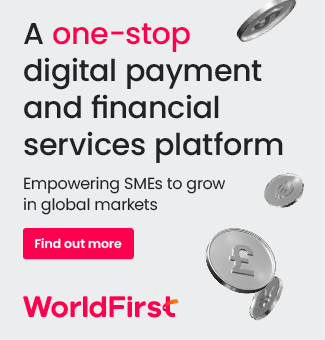The festive season is a prime opportunity for small businesses to shine, and the right Christmas marketing ideas can help them stand out in a crowded market.
With consumer attention pulled in every direction, preparation is everything. From crafting compelling campaigns to creating meaningful customer moments, a well-thought-out seasonal marketing strategy can make the difference between getting by and standing out.
Whether you want to boost brand awareness, increase website sales, or attract footfall, these 11 actionable marketing ideas will help you get ahead this holiday season.
Key takeaways
1. Set the scene: Create a festive customer experience
Best for: Retailers, cafés, and service-based businesses with physical or digital touchpoints
When to start: Early to mid-November
Your customer experience should feel distinctly like the business your customers have come to know, but with a seasonal twist. Creating a warm, festive atmosphere can deeply influence how customers think about your brand during the holidays. Small touches often make a big difference in fostering goodwill and repeat visits. Here are a few ideas:
In-store:
- Leverage the power of scent, carefully curated lighting, and festive décor to create a festive atmosphere. Consider infusing your space with aromas, such as cinnamon or pine.
- Enhance the experience by offering complimentary extras like steaming cups of mulled wine or hot chocolate. Delight guests with treats such as mince pies or gingerbread biscuits, and provide elegant gift-wrapping services.
Online:
- Revamp your website visuals with a festive theme that embodies your brand’s unique personality. Consider using vibrant colours, fun graphics, and seasonal fonts to create an inviting atmosphere for visitors.
- Establish a distinct and visually appealing shoppable section on your website to showcase seasonal products or bundled offerings. This section should be organised and easy to navigate, allowing customers to quickly find and purchase items relevant to the season. Use promotional banners to draw attention to these selections and highlight exclusive deals or limited-time offers.
Great festive experiences always leave a lasting impression. By thoughtfully tailoring both physical and digital environments, you invite customers to celebrate the season with your brand front of mind. Aim to launch your seasonal UX by late November to catch peak visibility and early shoppers.
- A guide to planning a last-minute office Christmas party
- Top 5 project management tools for small businesses
- How to scale your small business
Next step: Identify three small changes you can make either in-store or online to create a seasonal atmosphere, and set deadlines for their implementation.
2. Offer limited-edition products or gift bundles
Best for: Product-based businesses looking to drive seasonal sales
When to start: Product development by September, promotion by mid-November
Holiday shoppers are often drawn to exclusivity and unique, thoughtful offerings. Introducing limited-edition or bundled products is a strategic approach to tap into consumer desires and enhance perceived value while creating a sense of urgency. This strategy encourages customers to make purchases they consider meaningful gifts. Why not consider launching:
- Holiday-themed product lines
- Gift-ready bundles, such as a mix of premium products with lower-cost extras, to hit more budget ranges
- Personalised or one-off collaborations
A local candle brand could consider partnering with a ceramic artist to create a delightful Christmas gift set. To effectively promote this collaboration, both brands would emphasise the limited availability and heartfelt intention behind it with wording like: “Limited edition. Crafted with care. Available only for this season.” This approach would encourage a sense of urgency while highlighting the special nature of the gift set.
By providing unique offerings that customers can’t find anywhere else, you also elevate the chances they’ll choose your business over larger competitors during the bustling holiday shopping season.
Next step: Identify one exclusive offer or collaboration you can promote and begin drafting launch copy now.
3. Build an emotional connection through storytelling
Best for: Brands with a strong mission, community, or visual storytelling potential
When to start: Mid-November through to Christmas Eve
At its core, the holiday season is about connection, and your marketing should reflect that human element. Sharing authentic stories builds trust and loyalty by inviting customers behind the scenes and making your brand relatable. Amplify the stories that make your business human. Here are a few ideas:
- The origin of your most popular products
- A look behind the scenes of your festive prep
- Your team’s favourite holiday traditions or charity work
Next step: Write one short “story post” for social or email this week – include a photo, founder quote, or customer story.
4. Run an engaging holiday giveaway or challenge
Best for: Brands looking to grow reach and engagement on social media
When to start: Planning in October, launching by early December
Interactive marketing is a proven way to generate excitement and build community. People respond well to campaigns that are fun, rewarding, and easy to participate in, especially around the festive season when sharing is top of mind. Spark a connection with these ideas:
- A festive giveaway series (think: “12 Days of Christmas”)
- A branded hashtag challenge, like #FestiveWith[YourBrand]
- A contest encouraging customers to share how they use your product during the holidays. Stipulations like “double entries if you tag a friend or share your story” can boost your visibility
These campaigns encourage users to create content, helping expand your audience and keep your brand fresh in everyone’s minds throughout the season. When done right, they can spark excitement and really boost your visibility.
Not sure what campaign to run? Take a leaf out of Brava Fabrics’ book. This sustainable fashion brand used A/B testing to compare a universal discount with a one-time giveaway prize. Co-founder Ivan Monells shared that both offers generated equal results – proving that perceived value can come in different forms. This insight helped them refine future campaigns without leaving potential conversions on the table.
Next step: Choose your format (giveaway or challenge) and write a short brief for your social content.
5. Make your emails personal and purposeful
Best for: Email list owners and e-commerce businesses
When to start: October for early access; weekly sends through December
Your customer’s email inbox during the holiday season is guaranteed to be crowded, so standing out means offering genuine value and warmth. Personalisation beyond the customer’s name can create meaningful connections that drive sales and loyalty. Here are a few ways to stand out and make an authentic connection with customers:
- Send early access or loyalty rewards to your best customers
- Create helpful, themed gift guides based on past purchases
- Add personal notes from your founder or team, e.g. year-end reflections, behind-the-scenes holiday traditions, or a heartfelt thank-you video to build connection and trust.
A well-timed email with genuine value can drive both conversions and customer loyalty, especially when your tone feels human, not robotic. Thoughtful messaging shows customers you care about their experience, not just the sale.
Next step: Segment your email list and draft one festive campaign with a clear value-add for each audience. Start prepping emails to send to customers in October, as this way, you’ll catch early browsers and be top-of-mind for shoppers.
Seasonal brands like European candle company JewelCandle have seen major results by applying this strategy. JewelCandle uses a platform called Klaviyo to identify loyal customers based on past buying behaviour and send early-access offers in November, encouraging VIPs to start their Christmas shopping early. As a result, the brand can target newer customers later in the season, and 30% of its overall revenue now comes from this email marketing strategy.
6. Collaborate with other small businesses
Best for: Local makers, online brands with overlapping audiences
When to start: Reach out to partners in September or October
Holiday shopping is often community-oriented, so joining forces with fellow small businesses can amplify your impact. Collaborations offer creative ways to pool resources, share audiences, and create something unique that benefits everyone involved. Explore local or digital partnerships such as:
- Joint product bundles or gift boxes
- Shared pop-up events or markets
- Cross-promotions on social and email
Collaboration can be a powerful differentiator when budgets and attention are tight. This approach helps broaden your audience while supporting fellow entrepreneurs and fostering a sense of community spirit in your holiday marketing strategy.
Next step: List 2-3 businesses you admire and send a friendly email proposing a festive collaboration.
7. Optimise your website for seasonal search
Best for: Online stores and content-driven businesses
When to start: September or earlier for best SEO performance
The best time to start ranking for Christmas and holiday season searches is well before the festive rush. Search engine optimisation (SEO) strategies help ensure your products and offers are visible when customers actively want to buy. Here’s how you can prepare your website:
- Create a holiday-themed landing page targeting keywords like “small business Christmas gifts” or “local festive offers” Tools like AnswerThePublic and Ubersuggest are useful free tools to help you explore holiday-related terms.
- Optimise product titles and descriptions, metadata and images
- Link internally to relevant blog content, gift guides and special offers
Next step: Choose one key holiday keyword and optimise a landing page or blog post around it this week.
8. Measure your performance and stay flexible
Best for: Any business running paid ads, email campaigns, or time-sensitive promotions
When to start: Set up tracking before your first campaign launch
You can’t improve what you don’t measure. Start by defining your holiday goals: revenue, customer acquisition, website traffic, or conversion rate.
Use free tools like Google Analytics, Shopify Analytics, or Meta Ads Manager to track performance in real time. Review results weekly to spot trends early. If Pay per Click (PPC) results dip, promptly adjust your copy or creative. To maximise performance, consider running A/B tests on email subject lines, landing page copy, and ad creatives.
Next step: Define your key success metrics and block time each week to review and refine your campaigns.
9. Offer click-and-collect or local delivery options
Best for: Brick-and-mortar stores and service areas with strong local footfall
When to start: Promote delivery options and deadlines from late November onward
Convenience is king during the hectic holiday period. Offering multiple ways for customers to receive their purchases can remove barriers to buying and boost last-minute sales. If possible, consider offering:
- Click-and-collect for nearby customers
- Same-day or next-day local delivery
- Clear order-by deadlines for guaranteed Christmas arrival – you can use homepage banners and pinned Instagram posts to reinforce key order-by dates and ensure customers don’t miss them.
Share your options on your website, social media, and email campaigns. This will help last-minute shoppers feel confident and excited to buy from your business.
Next step: Draft your “order by” deadlines and add them to your website and pinned posts.
10. Don’t stop at Christmas Day
Best for: Brands with repeat purchase potential or new year launches planned
When to start: Plan in December, promote right after Christmas
While December 25th is the peak, the marketing opportunities extend beyond just one day. Many small businesses miss out on capitalising on Boxing Day and New Year’s momentum. Here’s how you can keep your marketing going all holiday season:
- Promoting post-Christmas sales or bundles, e.g. “clear the shelves sale” – framed as a seasonal reset to make room for new products.
- Offering loyalty rewards to December buyers, e.g. “your gift for giving us a great year” – framed as a surprise reward, such as a January discount or early access.
- Teasing January launches or resolutions-themed products, e.g. “New Year, new you (and us)” – teasing upcoming product drops or brand changes.
Next step: Create one post-Christmas offer and schedule it before the 25th.
11. Reflect, learn and improve for next year
After the holiday rush, the best strategy is to pause and evaluate. Using the website measurement goals you put in place, look at what worked and what didn’t to provide vital insights for refining your approach in future seasons. Once the last order is packed, take the time to evaluate your Christmas performance:
- What products sold best?
- Which campaigns drove the most engagement?
- What surprised you (in good or bad ways)?
Use those insights to inform next year’s strategy, or to shape future seasonal campaigns like Valentine’s Day, Mother’s Day or summer sales. Consider keeping a short campaign journal that records how many wins, misses and learnings you’ve had. This means you can measure your progress year on year.
Ready to get started?
Preparing for the holiday season means being intentional in your strategy and showing up with authenticity and value, rather than simply following what every other business does. By applying the right Christmas marketing ideas for your small business, you’ll increase seasonal sales and build meaningful customer relationships that last all year.
It’s much easier to show up authentically to your customers once you’ve established trust and credibility as a business. Thinking of starting before the New Year? Register your business now and hit the ground running. Get all the essentials you need to start your business with Quality Company Formations.
Frequently asked questions
Please note that the information provided in this article is for general informational purposes only and does not constitute legal, tax, or professional advice. While our aim is that the content is accurate and up to date, it should not be relied upon as a substitute for tailored advice from qualified professionals. We strongly recommend that you seek independent legal and tax advice specific to your circumstances before acting on any information contained in this article. We accept no responsibility or liability for any loss or damage that may result from your reliance on the information provided in this article. Use of the information contained in this article is entirely at your own risk.














Join The Discussion